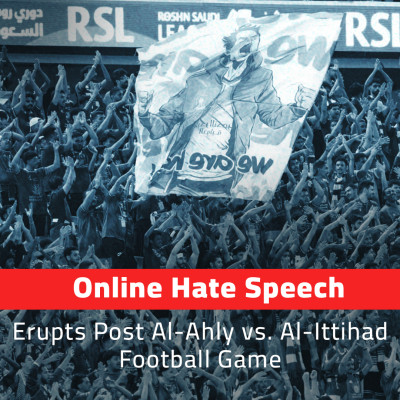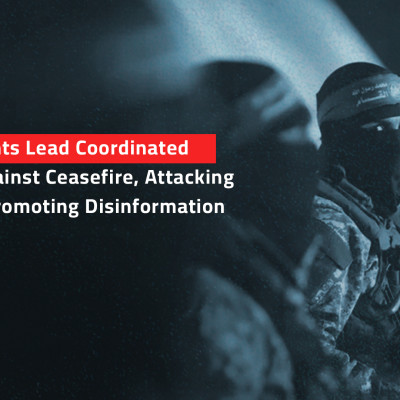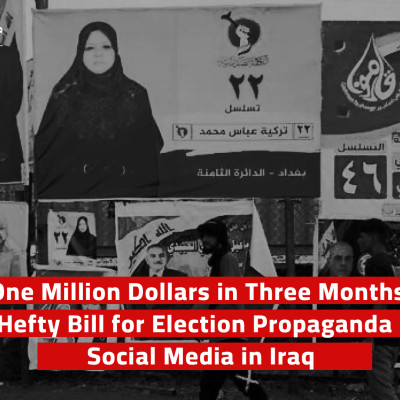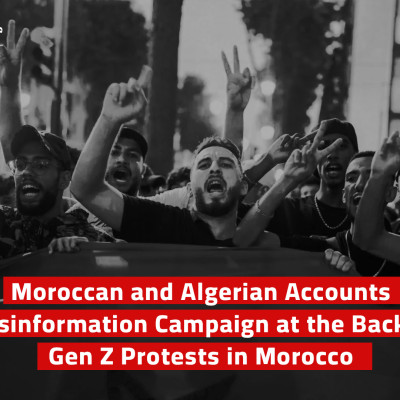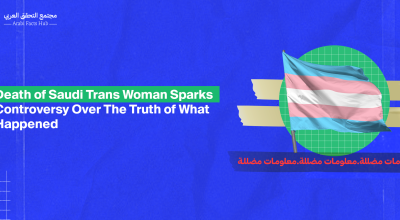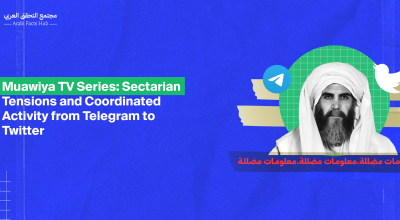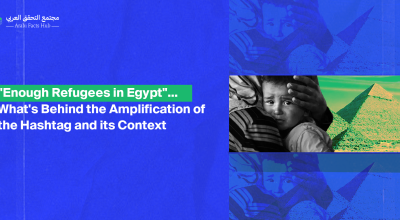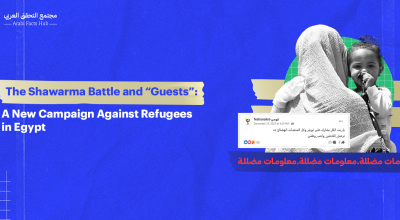Hate Speech and Incitement... Who Is Behind the Campaign to "Deport Egyptians from Saudi Arabia"
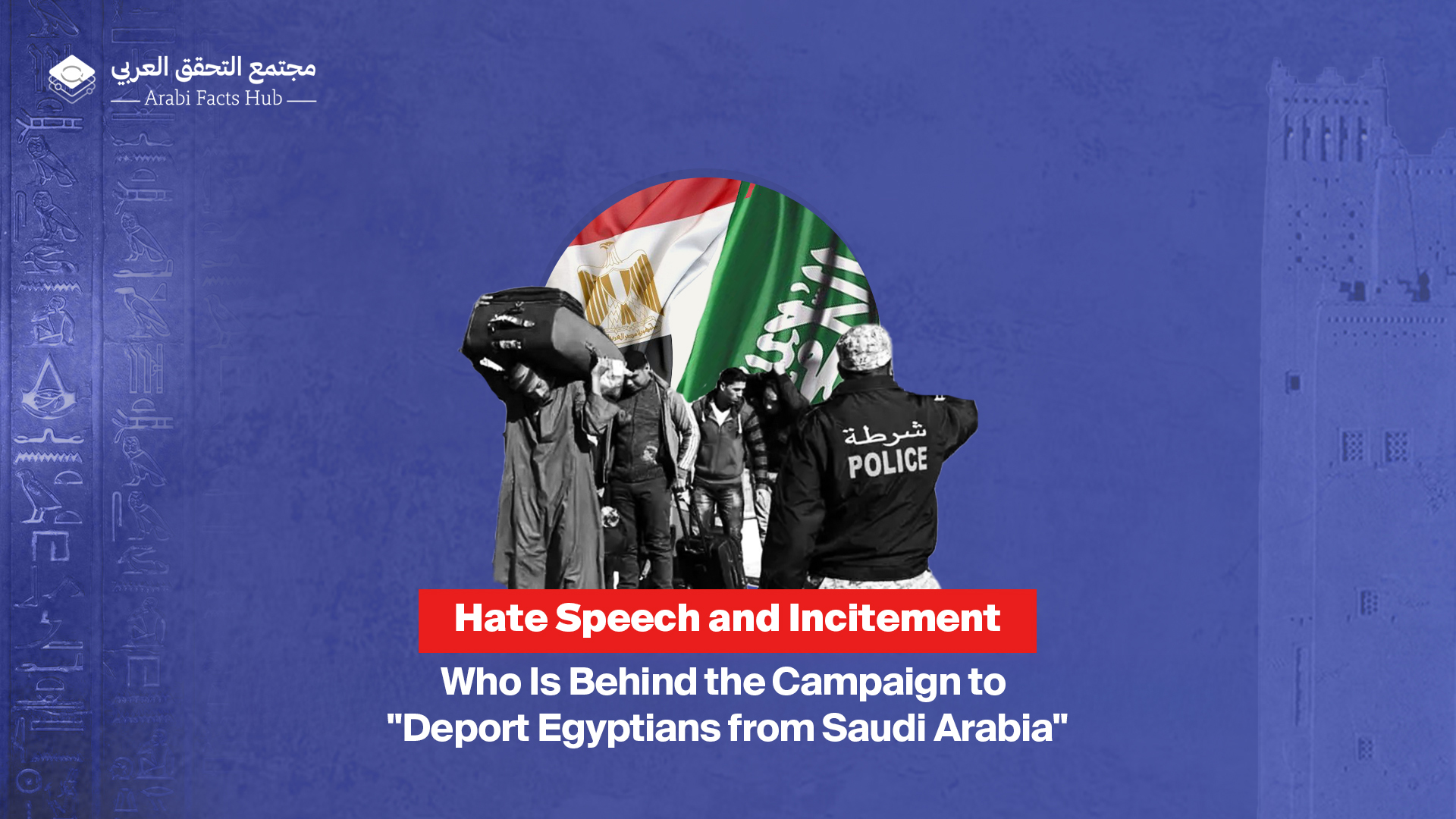
A Saudi-led online campaign was launched on "X" calling for the deportation of Egyptians in Saudi Arabia under the hashtag "#ترحيل_المصريين_مطلب_شعبي" (Deporting Egyptians is a popular demand). In addition to showing signs of inauthentic behavior, the campaign’s content included hate speech and incitement.
A Saudi-led online campaign was launched on "X" calling for the deportation of Egyptians in Saudi Arabia under the hashtag "#ترحيل_المصريين_مطلب_شعبي" (Deporting Egyptians is a popular demand). In addition to showing signs of inauthentic behavior, the campaign’s content included hate speech and incitement.
Some Saudis began engaging with the hashtag "#ترحيل_المصريين_مطلب_سعودي" (Deporting Egyptians is a Saudi demand), coinciding with the launch of another campaign under the hashtag "#تدويل_الحرمين" (Globalizing the Two Holy Mosques), which was predominantly driven by Egyptian accounts.
This report aims to analyze the digital campaign targeting the Egyptian community in Saudi Arabia, which used social media—particularly X—as a key tool to disseminate coordinated incitement messages. The report examines the level of coordination behind the campaign and analyzes the dynamics of digital interactions by exploring social networks, key terms, and influential nodes that helped amplify the inciting rhetoric and shape a hostile public sentiment on the platform.
Indicators of a Coordinated Campaign
Using Meltwater, the data collection process began by examining and analyzing the daily activity of posts associated with hashtags linked to the campaign directed aaginst the Egyptian community in the Kingdom of Saudi Arabia—most notably "#ترحيل_المصريين_مطلب_سعودي" (Deporting Egyptians is a Saudi demand) and "#ترحيل_المصريين_مطلب_شعبي" (Deporting Egyptians is a popular demand).
Initial findings indicated that activity was low at the beginning of the monitoring period in January 2025, with virtually no notable posts recorded during that phase.
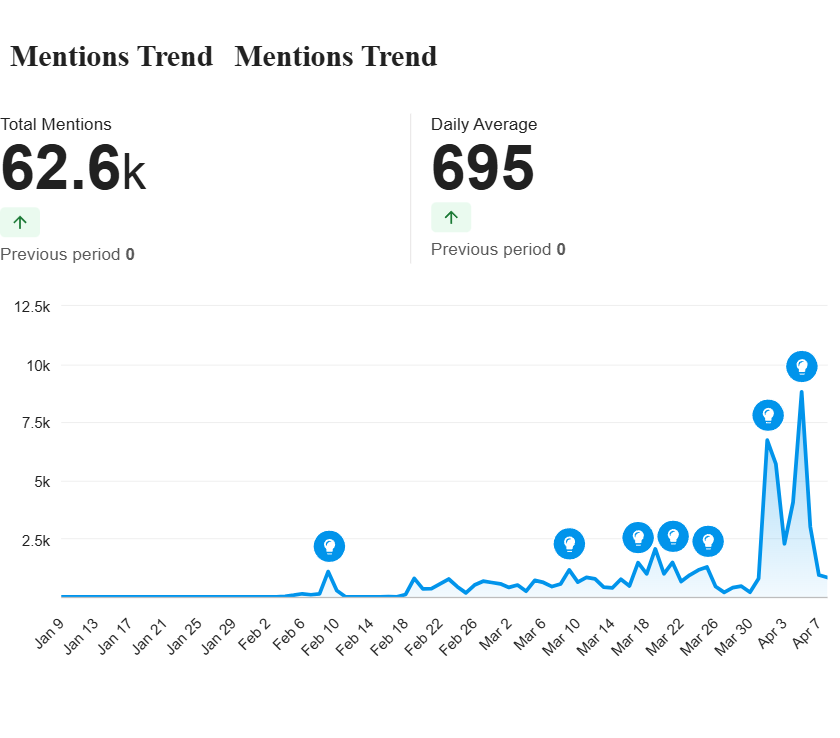
Activity began to emerge gradually by early February 2025, with a few dozen posts recorded daily. This activity remained relatively unremarkable until mid-February, when the number of posts started to rise noticeably, reaching hundreds of posts per day during the last two weeks of the month. The final days of February and the beginning of March saw a notable increase, culminating in an early peak with daily posts reaching around 1,000 on some days—suggesting the start of a more focused and intensified phase of the campaign.
Beginning in mid-March, the data showed a sharp escalation in post volume, with a clear pattern of intensified activity on specific days—most notably March 19, which saw 2,059 posts in a single day. What stood out most was the sudden and significant surge in early April 2025—specifically on April 1, when the number of posts skyrocketed to over 6,800 in one day. This was followed by similarly intense activity, though slightly less sharp, with more than 9,000 posts recorded on April 5.
In addition to analyzing post volume and user engagement with the hashtags, the nature of the interactions themselves was closely examined. Clear indicators of systematic use of different interaction types emerged, including reposts, replies, original posts, and quotes. For instance, reposts made up the largest share of activity, accounting for 57% of all posts, followed by comments at 31%, while original posts constituted only 9% of total content. This distribution suggests a potential strategy aimed at amplifying messages and increasing their visibility on the platform by recirculating or repackaging specific content.
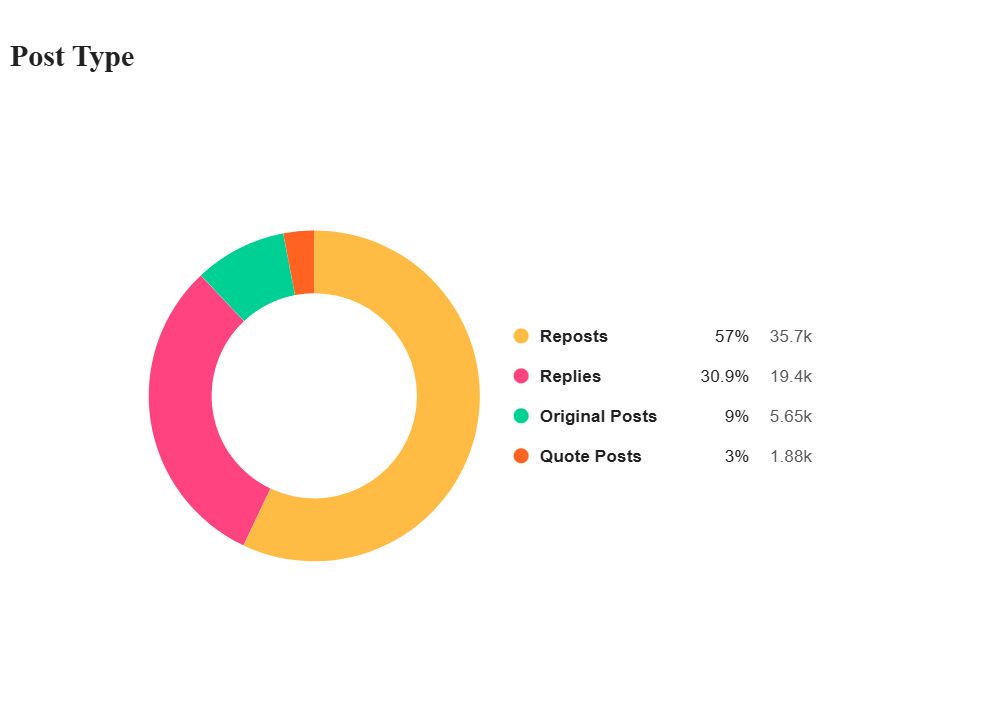
On certain days, such as April 1, 2025, a significant and unusual increase in the number of original posts was observed. This may indicate the presence of centralized coordination to create new, synchronized posts with a unified message. This spike coincided with a noticeable rise in the number of replies, which are often used in digital campaigns as a strategy to keep discussions active around the hashtag and ensure its continued presence among trending topics on the platform. These patterns reinforce the hypothesis of organized coordination aimed at keeping the campaign alive and visible in the digital space.
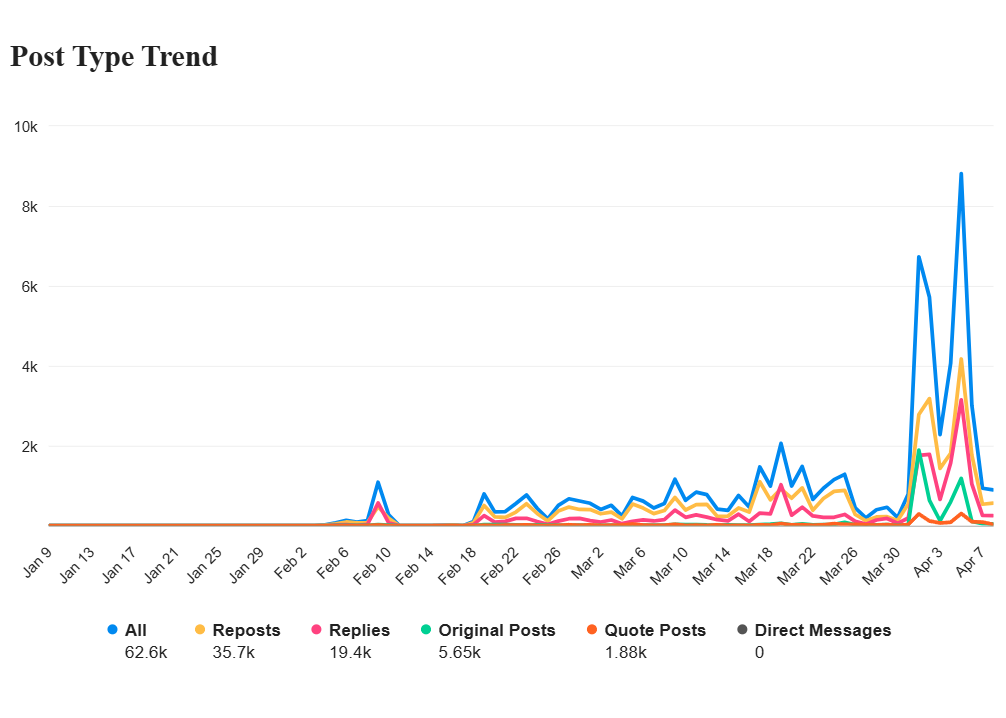
The matter was not limited to volume alone; the massive reach and number of views—exceeding 14 million on April 1, 2025—clearly indicated that the messages disseminated in this campaign had reached a broad audience. By early April 2025, the posts had reached over 33 million people, demonstrating that the campaign succeeded in achieving one of its main goals: wide influence and extensive dissemination among users.
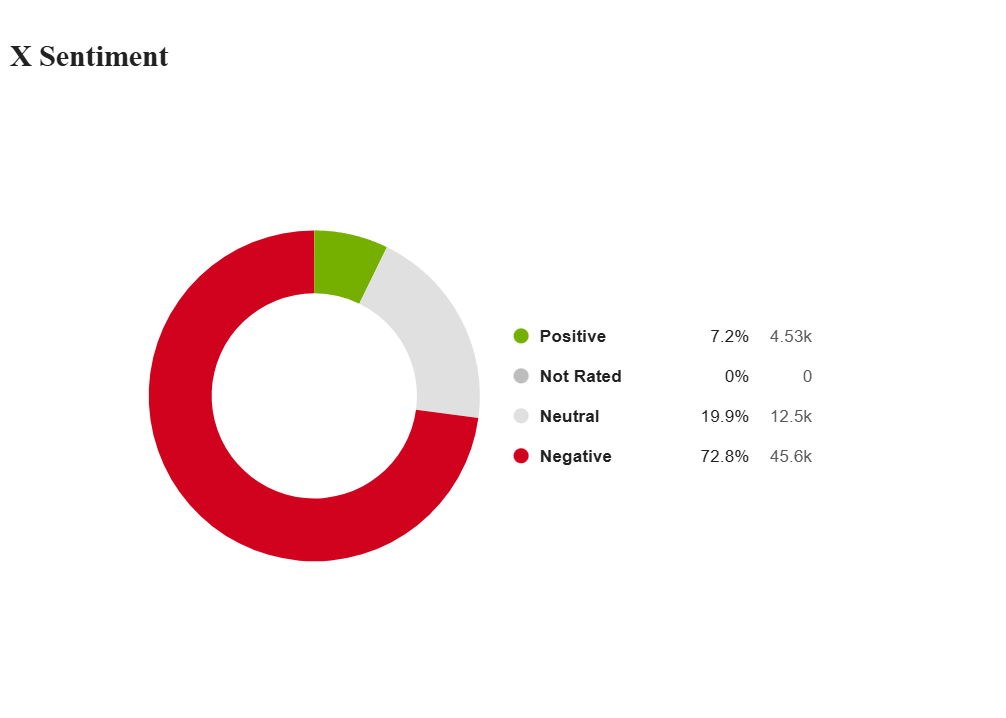
Negative Sentiment Dominates
A sentiment analysis revealed that the campaign was heavily centered around negative emotions, with negative posts accounting for approximately 88% of expressed sentiment. These negative sentiments included hate speech, verbal aggression, and accusations of treachery or exploitation. In contrast, positive sentiments made up only about 11% of the emotional activity and were scattered, lacking any significant impact on the overall direction of the campaign.
”
A Sentiment analysis showed that the campaign was heavily focused on negative emotions, with negative posts making up around 88% of all expressed sentiment. These negative emotions ranged from hate speech and verbal aggression to accusations of betrayal or exploitation. Meanwhile, the positive sentiments—which accounted for about 11% of the emotional activity—were scattered and did not represent a significant force in shaping the campaign’s direction.
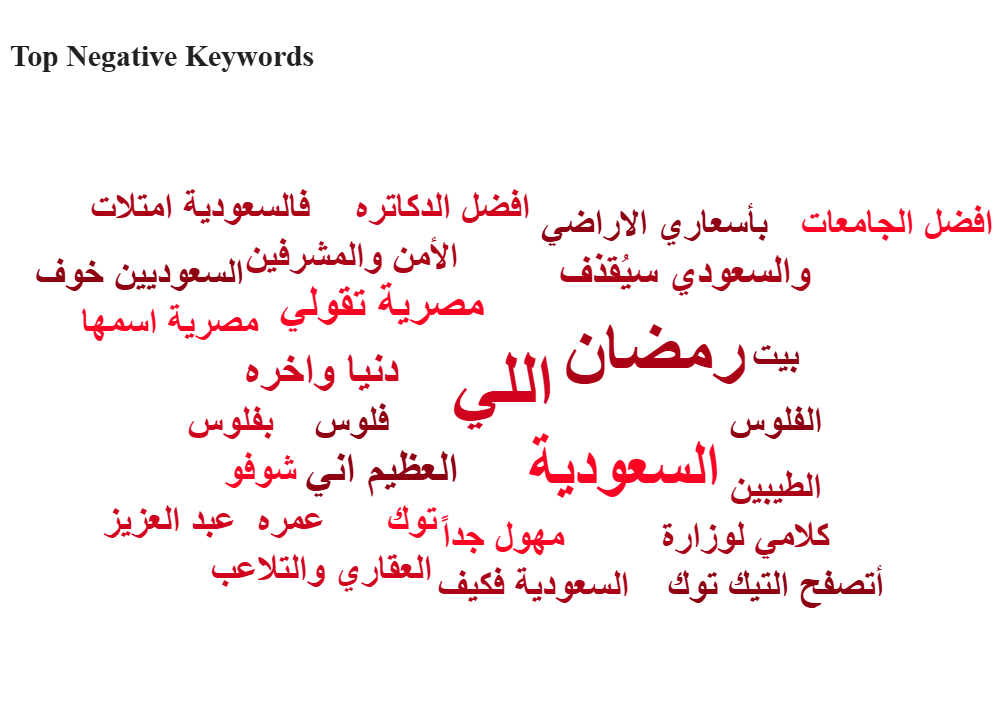
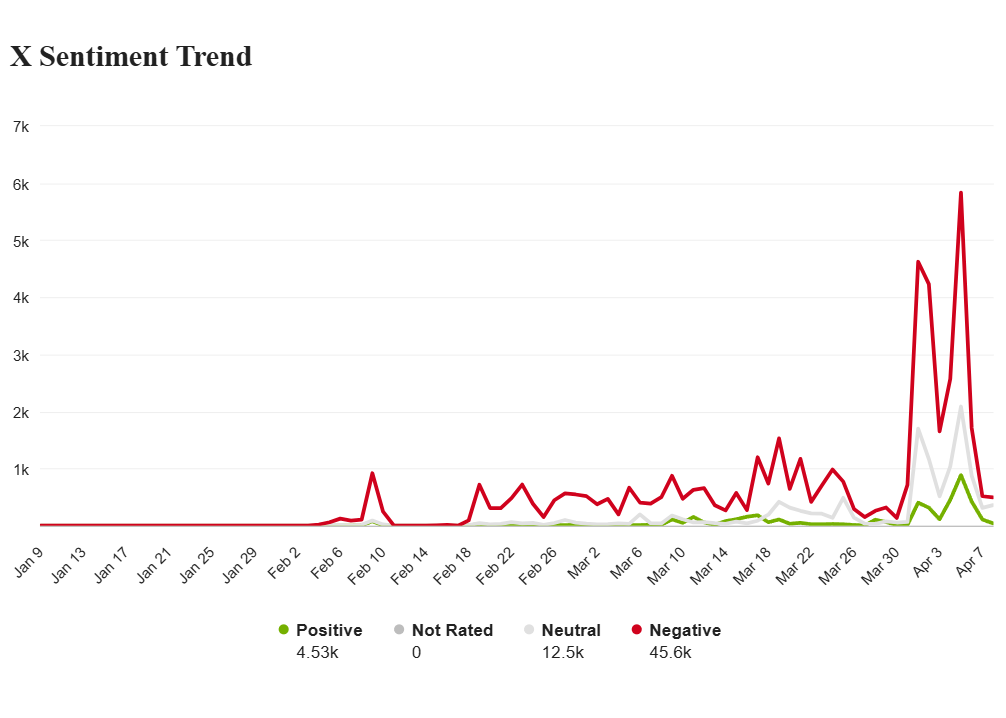
In terms of timing, negative sentiment surged dramatically between April 1 and April 5, 2025, marked by a sharp increase in hostile statements. For instance, on April 1, 2025 alone, the number of negative posts reached 4,696.
What stood out in this campaign was the noticeable shift in tone after the beginning of April 2025. The level of hostility intensified to include cultural and religious accusations, alongside the dissemination of content expressing economic fears about the presence of Egyptians and threats of altering the demographic structure.
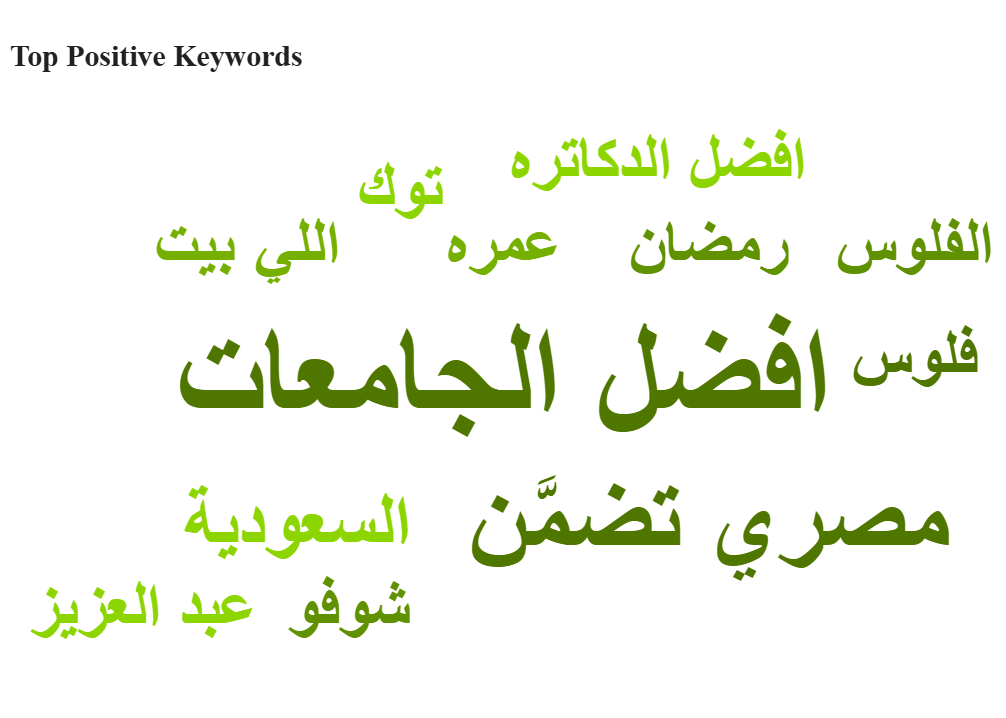
Despite this escalation in negative sentiment, the limited positive sentiment that did appear was used to convey messages of support and solidarity, in an attempt to balance the situation. Among the most prominent positive expressions were “Saudi Arabia” and ‘Umrah, which may reflect the shared religious traditions between the two peoples, especially during Ramadan and ‘Umrah season. Additionally, the phrase “best doctors” was used in reference to the strong reputation of Egyptian doctors in the Saudi medical sector. However, overall, these positive expressions were few and far between, vastly overshadowed by the widespread negative sentiment.
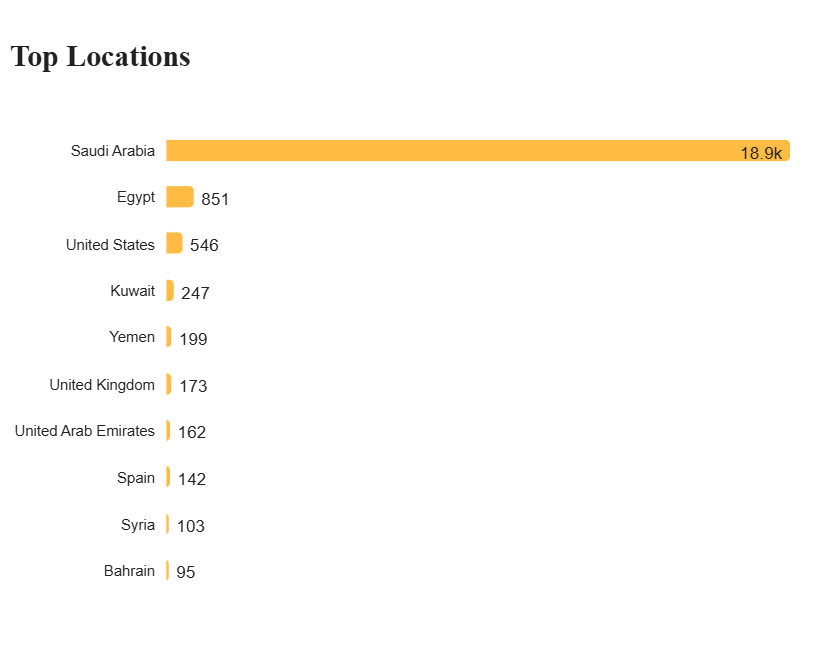
Gulf-Driven Campaign
Saudi Arabia served as the central hub for the digital campaign, ranking first in terms of post volume, with over 14,700 posts. Across the Red Sea, Egypt came in second, recording approximately 742 posts, reflecting Egyptians’ response to the hostile discourse originating from within the Kingdom. Although engagement within Egypt was significantly lower than in Saudi Arabia, the presence of a considerable number of posts by Egyptians suggests that the Egyptian community—both within Saudi Arabia and in Egypt—felt a sense of threat or concern from the campaign. Many chose to either counter the claims or respond to the hate speech with opposing content.
The data also revealed a notable geographic expansion of the campaign. Participation was not limited to Saudi Arabia and Egypt; it extended to other countries such as the United States (425 posts) and the United Kingdom (242 posts), indicating clear interaction among members of the Saudi and Egyptian diasporas.
Additionally, there was noteworthy engagement from neighboring Gulf states, including Kuwait (232 posts) and Yemen (168 posts). These figures suggest a regional alignment or shared sentiment with a dominant Saudi discourse against Egyptian labor, highlighting the Gulf-wide dimension of the campaign. Such contributions may reflect a common outlook or parallel rhetoric in the Gulf region regarding foreign labor issues.
Analysis of the Structure of the Discourse of the Digital Campaign and Its Key Messages
An analysis of the discourse in the most engaged posts within this digital campaign against Egyptians in Saudi Arabia reveals clear rhetorical patterns and strategies. These formed the foundational pillars relied upon by the main actors in managing and spreading the campaign.
”
An analysis of the discourse in the most engaged posts within the digital campaign against Egyptians in Saudi Arabia reveals clear rhetorical techniques and strategies that formed the core pillars relied upon by key actors in orchestrating and disseminating the campaign.
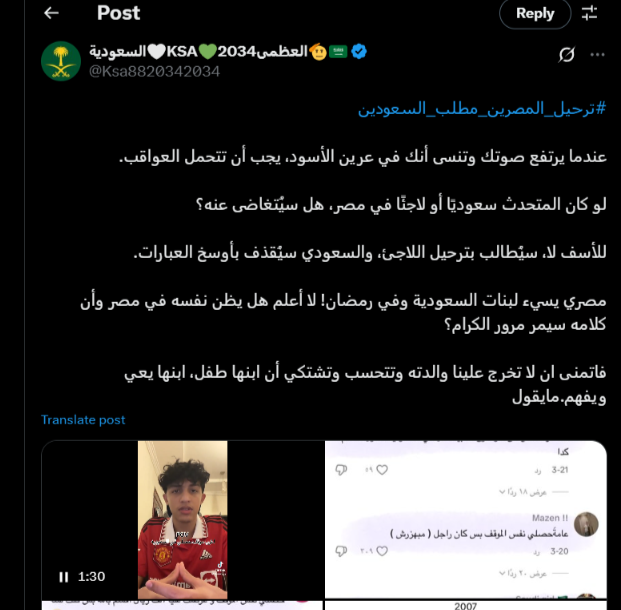
First, the most prominent element in the rhetorical structure of the campaign was the heavy use of nationalist sentiment and the emphasis on the concept of sovereignty. This was clearly evident in a post published on March 31, 2025, by the account @ksa882034ksa, where the metaphor "the lions' den" was used to refer to the Kingdom of Saudi Arabia. The aim was to evoke feelings of national pride and local dignity while portraying Egyptians as outsiders posing a threat to Saudi sovereignty. These metaphors were employed to fuel a "us versus them" narrative, designed to provoke anger and trigger emotional engagement among the audience—explaining the post's high engagement, which exceeded 5,000 interactions.
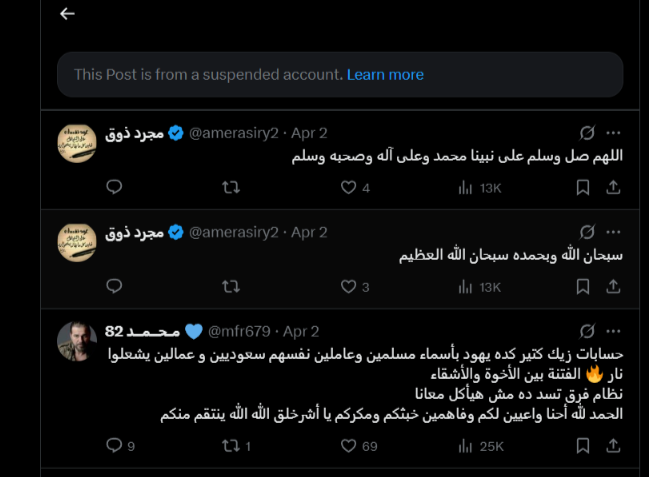
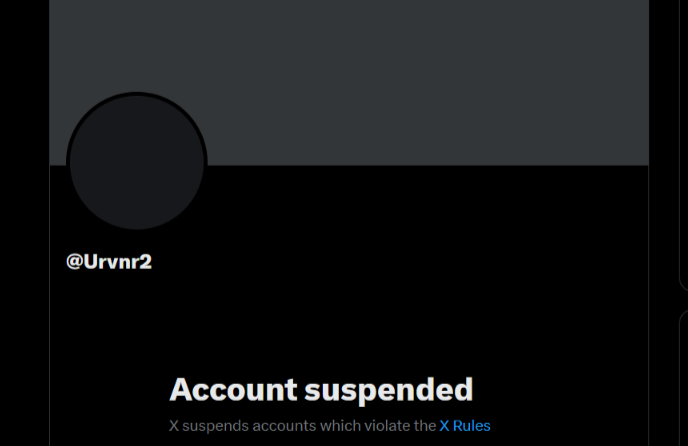
In a related context, the use of generalization and distortion emerged as one of the core rhetorical strategies of the campaign. This was exemplified in a tweet posted on April 1, 2025, by the account “@urvnr2,” which recorded the highest engagement—exceeding 14,000 interactions. The tweet featured a video allegedly showing an Egyptian woman residing in Riyadh, presented in a way that encouraged broad generalizations and negative stereotyping. The individual behavior depicted was framed as representative of the entire Egyptian community. Due to the aggressive tone and nature of the content, the post was later removed by platform moderators at X.
Additionally, hate speech and overt racism were prominently present in some posts—for example, a tweet dated March 18, 2025, from the account “@ff5q5q,” which contained offensive language and explicitly demeaning rhetoric.
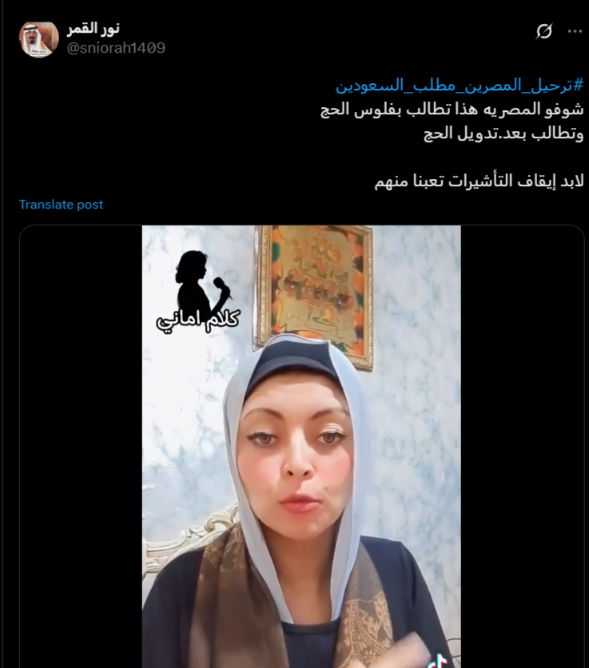
Another significant strategy employed in the digital discourse was the tactic of "evoking sensitive issues"—such as the topics of Hajj and ‘Umrah. This was clearly illustrated in a tweet dated April 4, 2025, from the account "@sniorah1409," which accused an Egyptian woman of calling for the internationalization of Hajj and demanding financial compensation related to pilgrimage.
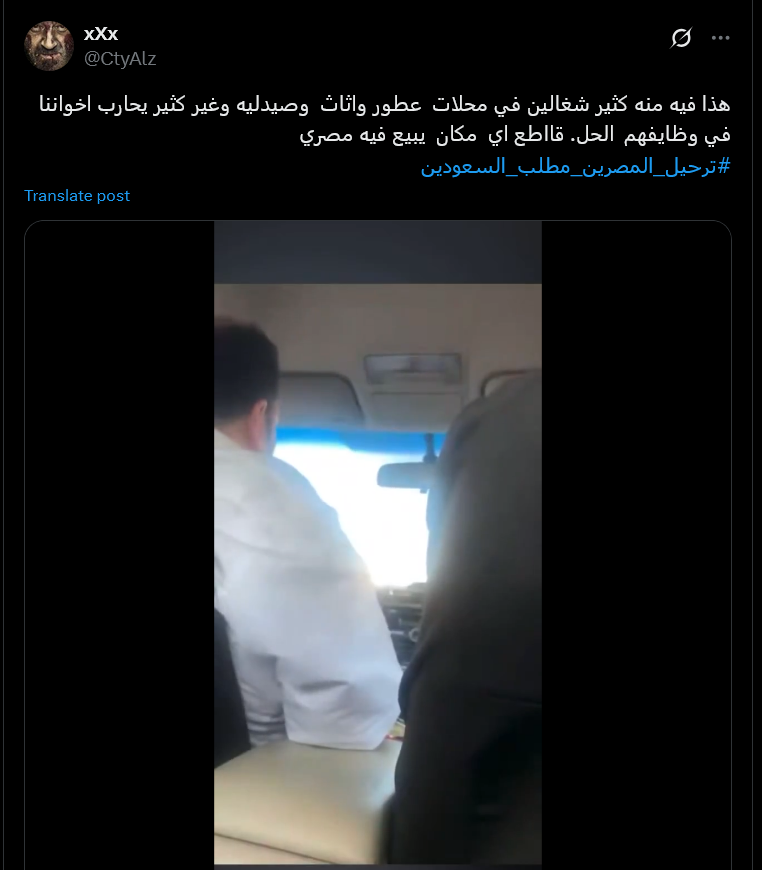
The strategy of "economic boycott" also emerged, which calls for practical measures against the Egyptian community by boycotting stores and products owned or sold by Egyptians. This was seen in a tweet from the account "@ctyalz" dated April 4, 2025.
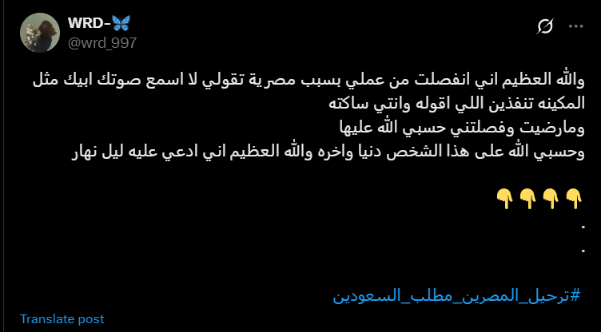
The tactic of "revealing alleged violations" was also used as part of the campaign's rhetorical structure, by hinting at corruption or misuse of the law by members of the Egyptian community. This was evident in a tweet posted by the account "@ALRmm9090" on March 29, 2025, which aimed to portray Egyptians as a community that disrespects local laws and regulations, attempting to frame them as a threat to public order and strengthen the moral justifications for their deportation.
Unified Discourse and Cohesive Network
We then moved to a network analysis of the accounts involved in the campaign. By analyzing the interaction structure and the connections between the participating accounts, a set of patterns and indicators became obvious that point to the nature of coordination within the campaign. These include the concentration of interaction around a limited number of central accounts and the repeated sharing of the same content across connected sub-networks, reflecting the existence of an organized distribution of digital tasks and a systematic strategy in managing the campaign.
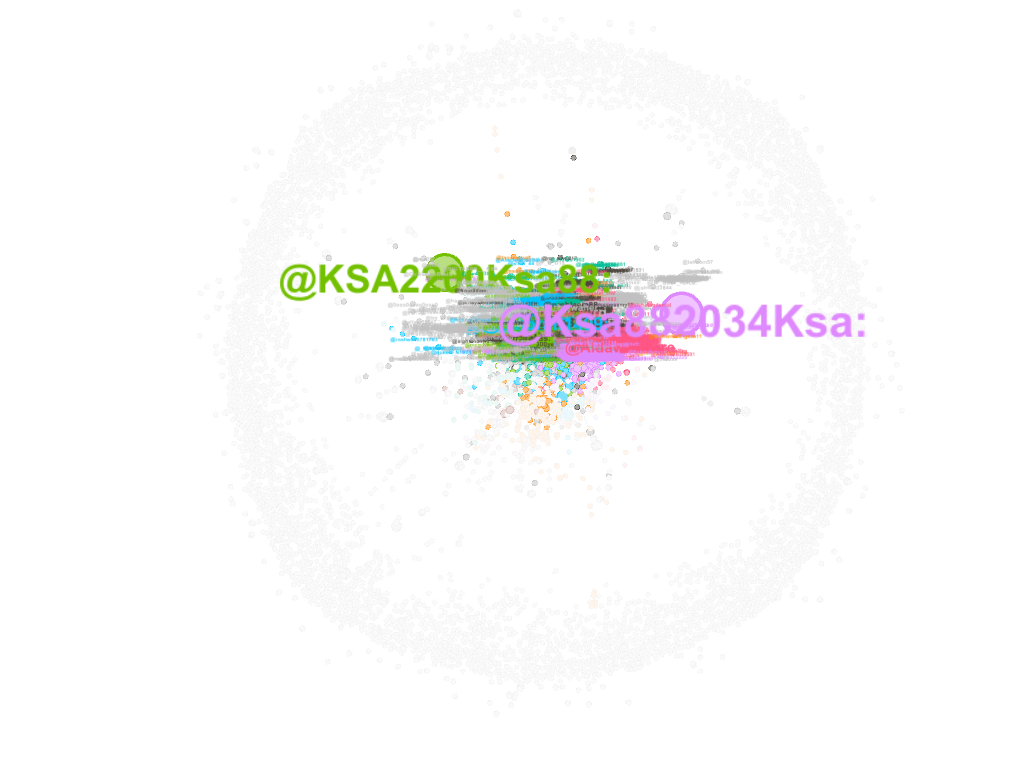

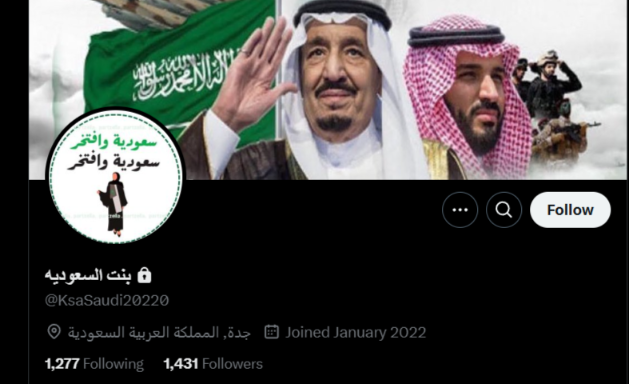
Initially, the network clearly demonstrates a highly cohesive central pattern, represented by a group of accounts that form the core and central nucleus of the digital campaign. This pattern was highlighted through prominent accounts such as @KSA2200Ksa88 and @Ksa882034Ksa, as the analysis revealed dense connections and repeated interactions between these accounts and a large number of others.
This reflects the central role they play in directing the digital discourse, setting the tone, and shaping the trajectory of the campaign. The network analysis also showed that these accounts, through their large node sizes, represent high-impact centers of gravity, directly responsible for amplifying messages and ensuring their spread within the network.
The account @KSA2200Ksa88 uses a cover image of the King of Saudi Arabia and the Crown Prince, and its profile picture includes the phrase "Saudi and Proud." There is no data indicating the identity of the account owner.
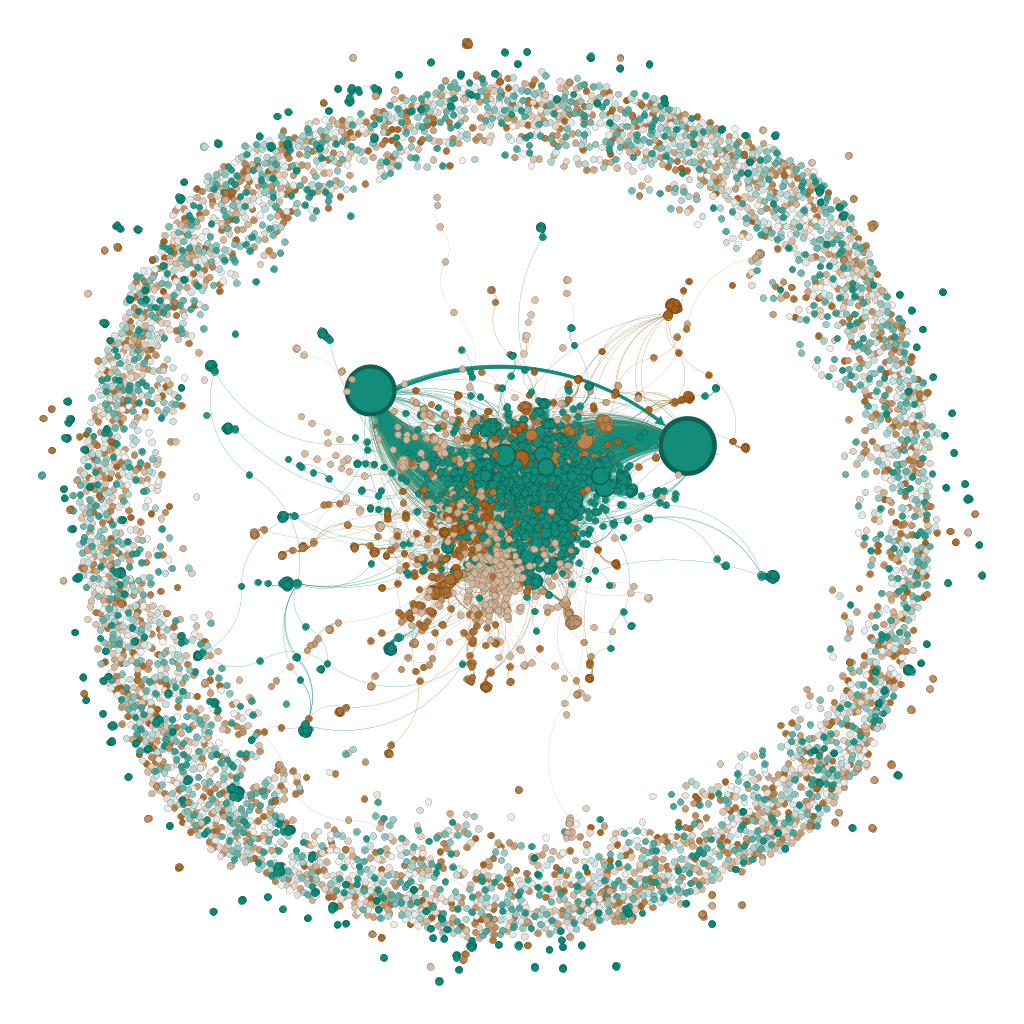
The network analysis revealed a cohesive circular structure centered around the main accounts, which is known in digital network analysis as the "hub-and-spoke model." In this model, central accounts act as the primary starting points for messages, which are broadcast to a wider audience via peripheral accounts that are relatively weakly connected to each other but are all linked to these central nodes. This model clearly indicates a well-coordinated and carefully planned digital campaign, rather than an organic or natural interaction between users.
Furthermore, the analysis of network communities using the "Louvain" algorithm revealed distinct subgroups, marked by different colors in the network. These subgroups indicate the presence of various factions within the campaign, each with a specific role, spreading and amplifying their own messages within the broader campaign.
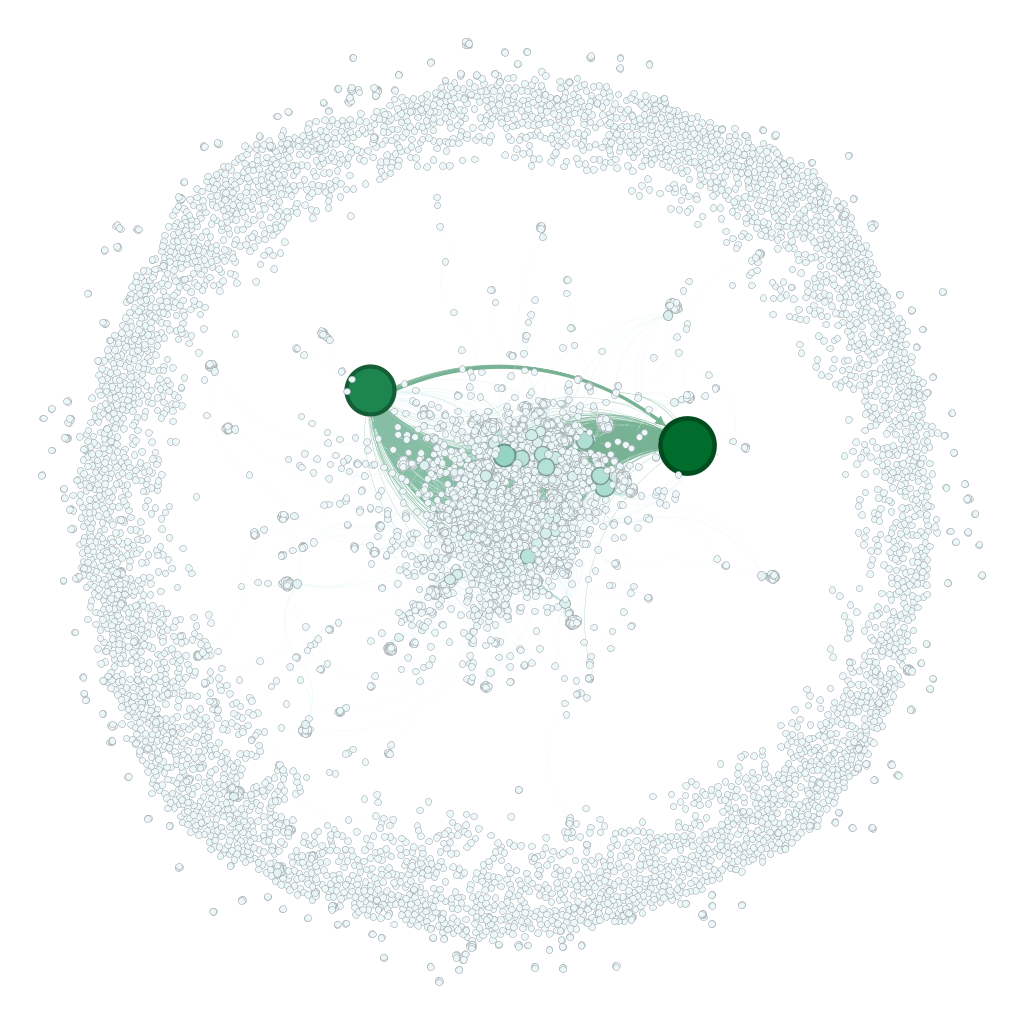
One of the key observations that emerged from the analysis is the presence of a large number of peripheral accounts that participate in a limited capacity, often restricted to resharing messages originating from the central accounts. These accounts suggest the potential use of digital bot networks or accounts specifically created for the purpose of artificial amplification.
Finally, the network structure does not contain counter-discussions, deep interactions, or multi-directional dialogues. Instead, it is characterized by a single-focused, centralized direction and message, reflecting the campaign's nature as a coordinated discourse with a clear and specific objective.
Racist and Inciteful Rhetoric
As part of the in-depth analysis of the discursive structure of the campaign against the Egyptian community in Saudi Arabia, a number of central accounts have been identified that played key roles in directing the discourse, amplifying messages, and enhancing dissemination. Leading among these accounts is the account "السعودية🤍KSA💚العظمى 2034🫡🇸🇦", identified by the handle "@20399_ksa", along with another account known as "xXx", with the handle "@CtyAlz". This analysis provides a detailed and clear picture of these accounts, the discourses they used, and the trends they reflect within the campaign.
1. The Account "السعودية🤍KSA💚العظمى 2034🫡🇸🇦" @20399_ksa (Great Saudi)
This account, which has over 5,500 followers and was created in March 2020, emerges as one of the high-impact accounts in the campaign. Through tracking and analyzing its posts, a number of key characteristics become apparent. Firstly, the account has a strong nationalistic tendency, clearly relying on invoking Saudi nationalism to increase engagement with its followers, using aggressive and direct language. This is particularly evident in its constant references to "national sovereignty" and "threats posed by the other," using rhetoric to depict Egyptians as a threatening element that could jeopardize Saudi national identity.
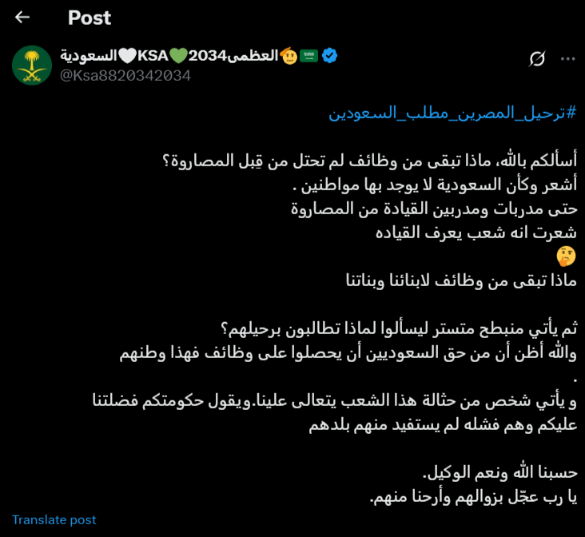
The account frequently uses explicit hostile language and harmful generalizations in its posts, such as describing Egyptians as traitors and continuously accusing them of conspiring, often including mocking and offensive phrases like, "Treason runs in your blood." This has contributed to an escalation of hostile sentiment among participants. The account also resorts to threats and incitement against Egyptians, issuing threats aimed at intimidation and humiliation. It also attempts to isolate counter or moderate discourses by questioning the motives of these narratives and linking them to foreign agendas, such as accusing Egyptian accounts of trying to sow discord with the UAE.
2. The Account "xXx" (@CtyAlz)
The account "@CtyAlz" reflects a different yet similar approach, serving the same goal of promoting hate speech and discrimination in a systematic and targeted manner. Despite the account being anonymous and seemingly having limited interaction (less than 300 followers), the content of its posts reveals its role in re-sharing and intensifying the inciting messages against Egyptians. This account primarily relies on inflammatory rhetoric against foreigners, particularly Egyptians and Syrians, reinforcing the hate speech it promotes and contributing to its spread across multiple networks.

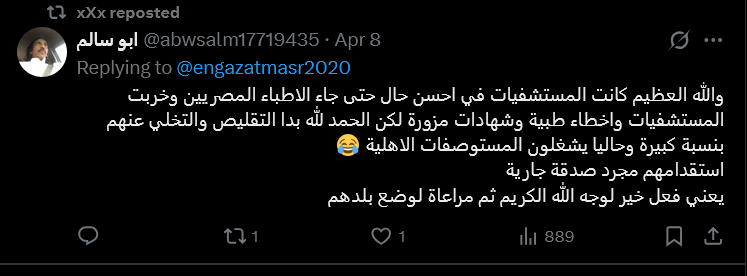
This account functions as an amplifier and redistributor of inciting messages originating from more influential accounts, making it an active part of the effort to broaden the reach of hate speech and reinforce hostile narratives.
